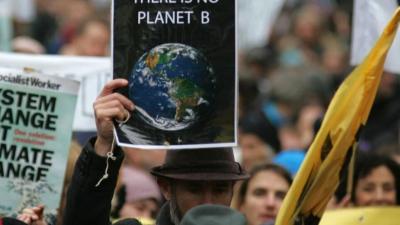
Improving access to redress for workers vulnerable to violence and harassment in South Asia
Experts discuss the factors that make some workers more vulnerable than others to violence and harassment.
This page is approximately a 3 minute read
This page was published on

Infectious diseases, climate change, and economic crises are of global concern. Large influential international organisations like Save the Children, U.S. Agency for International Development (USAID), and United Nations spend billions of dollars worldwide on programmes to mitigate risk. Public outreach and communications is often a part of these programs.
Communicating well about any topic requires understanding the audience. Therefore, behavioural scientists study how people perceive risks, and what types of risk messages work best. However, behavioural science research has mostly focused on the United States and Europe.
The new Lloyd’s Register Foundations’ World Risk Poll has asked more than 150,000 participants from 142 countries about different risks. The top line results have been published in the World Risk Poll report. Our team at the University of Southern California (USC) will use insights from the World Risk Poll to help international organisations with their risk messages. Below, we discuss three of these actionable insights.
First, the numbers do not speak for themselves. Risk experts often want to warn about the percent of people who are at risk. However, not everyone knows how to interpret these percentages. The World Risk Poll shows that only 40% of people around the world knows that 10% is the same as 1 in 10. It is even lower than that in Southern and Southeastern Asia as well as most of Africa (with the exception of Northern Africa). Thus, risk messages will be easier to understand if they explain what the numbers mean (e.g. “COVID-19 spreads through the air when we cough, sneeze, or speak”), and what to do with them (e.g., “wear a mask”). Risk messages should also be combined with programmes that make recommendations easier to follow (e.g., by making masks available and normalising their use).
Second, personal stories of actual experiences resonate with people. People often do not worry much about risks that they have not experienced. That can change once they or someone they know experience harm. For example, the World Risk Poll shows that most global citizens (69%) think of climate change as a threat. People with stronger climate concerns are more likely to report that they or someone they know experienced harm from severe local weather. Thus, messages about climate change will be more compelling if they talk about people’s personal experiences with local weather. It also helps to share the personal stories of others who have experienced the risk.
Third, share risk messages through the most trusted sources in the country. International organisations often work with local governments. But local governments may not always be the most trusted source of advice. The World Risk Poll asked participants who they trust the most for information about food safety. The two most trusted sources were family and friends, and medical professionals. In many countries, government agencies were trusted less than those two sources. Thus, to share risk messages, international organisations may want to involve the most trusted sources in the country they are working in.
Please do not hesitate to contact us.
Wändi Bruine de Bruin is Provost Professor of Public Policy, Psychology, and Behavioural Science at the University of Southern California (USC).
Kate Weber is Director of the University of Southern California Dornsife Public Exchange
Disclaimer: all blogs featured are the views of the author and not representative of Lloyd's Register Foundation.